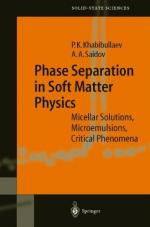|
This section contains 408 words (approx. 2 pages at 300 words per page) |
A solid solution series is the compositional range between end-member minerals that share the same basic chemical formula but experience substitution of elements in one or more atomic sites. This substitution occurs when an element in a mineral formula can be replaced by another of similar size and charge to make a new mineral. For example, iron and magnesium can readily replace one another in a mineral. In some cases, the substitution can be complete and range from entirely one element to another element, resulting in end-member mineral compositions. One example is olivine, which can vary from Mg2SiO4 (forsterite) to Fe2SiO4 (fayalite). This is known as complete solid solution. Such a mineral can also consist of any intermediate percentage of either end-member. The compositional range between end-member minerals that exhibit complete solid solution is known as a solid solution series.
Another example of a complete solid solution series is between siderite FeCO3 and rhodochrosite, MnCO3. In this and the olivine example, the cation is replaced. Complete anion substitution series are less common, but one example is given by KCl to KBr. Solid solutions can be more chemically complicated as well, with more than one element being replaced. In plagioclase, a complete series exists between albite, NaAlSi3O8 and anorthite, CaAl2Si2O8. In this case, Na+ is similar enough in size to substitute for Ca2+. Because the charges are different, a shift in the number of aluminum and silicon atoms is required to maintain neutrality.
Complete solid solution is also possible with three endmembers. In the pyroxenes for example, compositional variation among of Ca2+, Mg2+, or Fe2+ is often represented in terms of three simplified components: wollastonite (CaSiO3), enstatite (MgSiO3), and ferrosilite (FeSiO3).
The actual compositional variation of a given mineral that forms a solid solution series may be expressed by the abbreviated mineral names with its proportion subscripted. An olivine that has been analyzed and determined to consist of 25% Mg2+ and 75% Fe2+ would be represented by Fo25Fa75. This composition may also be written in terms of the molecular formula: (Mg0.25Fe0.75)SiO4. Graphical forms are also common. In the case of two end-members, a bar diagram is used and the composition is plotted on the bar. When three endmembers are present, a diagram that places each end-member at the point of an equilateral triangle allows compositional variations to be plotted anywhere within the triangle.
See Also
|
This section contains 408 words (approx. 2 pages at 300 words per page) |


